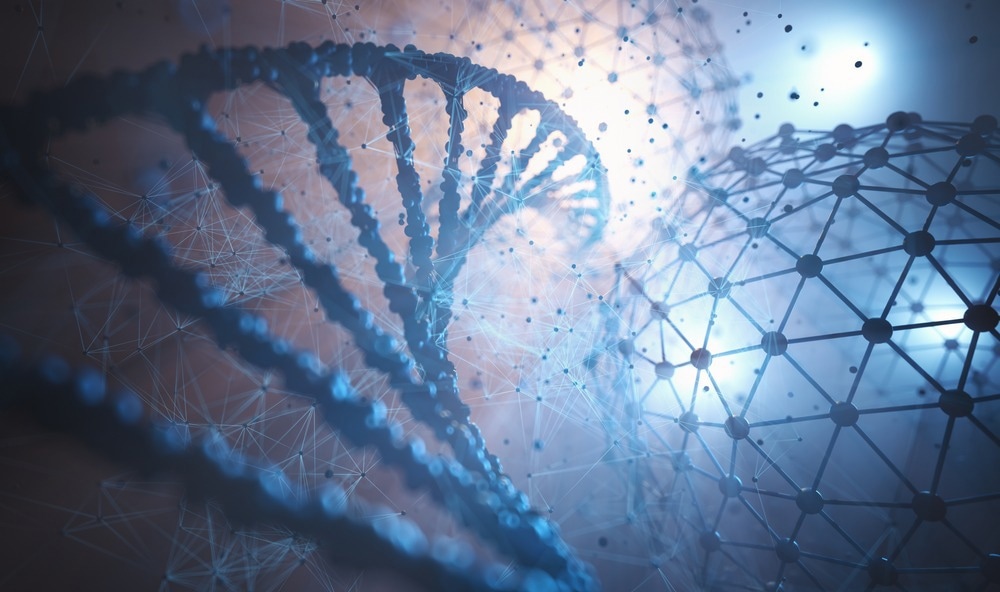Transcriptomics is a cutting-edge field of study within genomics, revolutionizing our understanding of gene expression. In simple terms, it is the exploration of the entire collection of RNA molecules within a cell, otherwise known as the transcriptome.

Image Credit: ktsdesign/Shutterstock.com
An Outline of Transcriptomics
Many transcriptome studies primarily concentrate on messenger (m)RNA molecules, representing actively expressed genes (producing protein products) in a specific cell or tissue under certain circumstances. Interestingly, 95% of cellular RNAs do not undergo translation into proteins. Transcriptomics includes the study of non-coding RNAs as well, which have a wide variety of forms and functions.
Through the study of gene transcripts, our comprehension of gene expression has been revolutionized, leading to advancements in medicine, agriculture and environmental research.
Transcriptomics Techniques
There are several techniques that are used to analyze the transcriptome. One widely used approach is microarray analysis.
Microarray analysis involves attaching labeled DNA probes to a solid surface and hybridizing them with complementary RNA sequences from a sample. By detecting the intensity of the hybridization signals, researchers can determine the abundance of specific mRNA molecules in the sample.
Using this technique, researchers can simultaneously measure the expression levels of thousands of genes.
RNA-sequencing (RNA-seq) is another impressive method used in transcriptomics. It involves using next-generation sequencing technologies to generate vast amounts of data on the RNA molecules present in a sample.
RNA-seq allows the identification of novel transcripts, alternative splicing events, and non-coding RNAs, enabling a deeper understanding of gene regulation.
Applications of Transcriptomics
Transcriptomics is valuable to a range of different scientific disciplines. It plays a crucial role in understanding disease mechanisms, identifying drug targets and in personalized medicine.
Researchers can compare the transcriptomes of healthy and diseased samples, identifying genes and pathways up or downregulated in diseases such as cardiovascular disorders, cancer and neurogenerative conditions. This information is valuable in the world of targeted therapeutic medicine.
Transcriptomics even has a role in agricultural research. By mapping the transcriptomes of plants, scientists gain insight into the molecular mechanisms that support important traits, meaning crops can be bred with desirable characteristics. Doing so could help to enhance crop yields, improve stress tolerance and develop disease-resistant plants.
In environmental research, transcriptomics can shed light on the impact of pollutants, climate change, and other environmental stressors on different organisms. By analyzing the transcriptomes of organisms subjected to specific environmental conditions, scientists can identify molecular responses and adaptive strategies that provide valuable insight into conservation efforts and ecosystem management.
Other applications worth mentioning include aging, embryonic development and cellular differentiation. Researchers can discover the mechanisms that drive these processes by studying gene expression, providing a solid foundation for further research.
Challenges and Limitations of Transcriptomics
While transcriptomics has revolutionized the field of gene expression studies, there are also challenges and limitations that researchers encounter in their work.
Transcriptomics studies generate a vast amount of data which has to be analyzed and interpreted correctly. Developing robust computational algorithms and bioinformatic tools for data processing, normalization and statistical analysis has been essential, albeit still complex and time-consuming.
The highly complex nature of the transcriptome can make it challenging to decode. It consists of various RNA molecules, including coding and non-coding RNAs. Among the non-coding RNAs are microRNAs and long non-coding RNAs, which play crucial roles in gene regulation. Accurately detecting and characterizing these non-coding RNAs using existing transcriptomic methods presents significant challenges.
Some transcriptomic techniques, such as RNA-seq, can be expensive and require specialized expertise and equipment. This may present an issue to resource-constrained research settings, limiting the widespread adoption of these techniques.
Transcriptomics: Future Directions
There are exciting advancements in the field of transcriptomics that will build on our understanding of gene expression and its implications.
The emergence of single-cell RNA sequencing (scRNA-seq) in the past few years has had a significant impact on transcriptomic studies. It allows for the profiling of gene expression at the level of the individual cell, enabling the study of cellular heterogeneity.
By combining transcriptomic data with other ‘omics’ technologies; genomics, proteomics and metabolomics, a more comprehensive understanding of our biological systems can be achieved. The integration, called multi-omics, can uncover complex regulatory networks, identify key functional pathways, and offer a holistic view of cellular processes.
Transcriptomics will continue to play a vital role in personalized medicine, disease diagnosis and therapeutic development. Combining transcriptomic data with clinical information and patient outcomes will facilitate the identification of biomarkers, increase our understanding of disease mechanisms and enable tailored treatments based on individual gene expression profiles.
Sources
Lim, W. K. and Mathuru, A. S. (2020). Design, challenges, and the potential of transcriptomics to understand social behavior. Current Zoology, [online] 66(3), pp.321–330. doi.org/10.1093/cz/zoaa007.
Lowe, R., Shirley, N., Bleackley, M., Dolan, S. and Shafee, T. (2017). Transcriptomics technologies. PLOS Computational Biology, 13(5), p.e1005457. doi.org/10.1371/journal.pcbi.1005457.
Wang, Z., Gerstein, M. and Snyder, M. (2009). RNA-Seq: a revolutionary tool for transcriptomics. Nature Reviews Genetics, 10(1), pp.57–63. doi.org/10.1038/nrg2484.
www.sciencedirect.com. (n.d.). Transcriptomics - an overview | ScienceDirect Topics. [online] Available at: www.sciencedirect.com/.../transcriptomics.
Last Updated: Jul 31, 2023